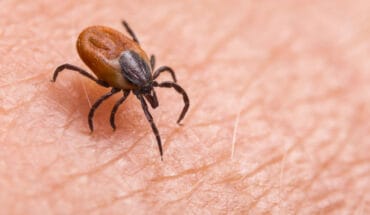The Government should publish its long-awaited vaccination strategy as soon as possible to help reverse a dramatic decline in take-up and protect young and vulnerable people from deadly infections, the Local Government Association says today.
While uptake for most childhood immunisations is at more than 90 per cent, there has been a significant decline in coverage in the last few years with the UK losing its ‘measles-free’ status with the World Health Organisation, three years after the virus had been eliminated in the country.
The Government’s vaccination strategy was first announced in the Prevention green paper last summer and was delayed due to the General Election. It is expected to include proposals, such as greater use of technology to identify missed vaccinations and make booking appointments easier, improving GP capacity to accept more vaccination appointments and developing a major new awareness campaign.
The LGA, which represents councils in England and Wales which are responsible for public health, supports the Government’s ambition to raise vaccination rates to at least 95 per cent, which can reduce the risk of contracting disease and ultimately save lives.
In a new report, the LGA has set out how councils are continuing to find new and innovative ways of raising immunisation levels in their communities, including reaching out to those most in need or at risk.
The LGA’s report highlights the existing work of councils to support vaccination services, as part of their unique understanding of the health needs of their local populations. This includes running mobile clinics in partnership with the fire service and immunisation teams, and using online video and social media to reach out to certain minorities and other underrepresented groups.
To build on these efforts, it is also calling for local authorities to be able to maximise their public health roles by making full use of all their other services, to help ensure communities are immunised and fully protected.
These include a greater role in bringing the wider system together and holding local partners to account, to ensure vaccination programmes have the widest possible reach and with easy access for all communities.
Cllr Ian Hudspeth, Chairman of the LGA’s Community Wellbeing Board, said:
“Vaccination is absolutely vital in protecting young and vulnerable members of our communities from fatal infections.
“Supporting vaccine uptake and helping ensure all those who are vulnerable and at risk receive the necessary advice and treatment are among the many public health responsibilities of councils.
“By working closely with local GPs, NHS England, community groups and others, councils’ public health teams are finding new and innovative ways of reaching out to people who might not otherwise be protected from deadly diseases and are doing what they can to keep immunity levels high.
“However there is still more to do. In addition to the publication of vaccination strategy as soon as possible, councils need greater powers of oversight to ensure that those responsible for delivering vaccinations do so promptly.
“No one who needs to be immunised should miss out unnecessarily.”
CASE STUDIES
Examples of what councils have done to improve vaccination rates include:
Brighton and Hove: The local immunisation team has been working closely with health visitors, commissioned by the city council, to increase uptake among vulnerable groups such as teenage parents, asylum seekers and refugees, care leavers, those under the care of social workers and the homeless alongside traveller families. Link nurses and health visitors hold health clinics every school holiday at dedicated traveller sites.
Derbyshire: A strong working relationship between the council’s health protection team and the regional NHS England immunisation service have led to staff at nurseries and children’s centres promoting greater uptake of MMR. Links with the home education service has also led to information-sharing about when children are being educated away from school and need vaccinations.
Leeds: Following a measles outbreak two years ago, the city has worked hard to drive up vaccination rates more generally and taken pro-vaccination messages direct to the public. GP data was analysed to map vaccination rates down to a local level and helped identify key areas to focus on. Videos and other social media assets have been produced by the council and NHS, including Horrible Histories-style short video stories about the risks of flu and need for vaccination.
Tower Hamlets: The council’s public health team works closely with local and regional partners to deliver targeted and population-wide work to encourage vaccination uptake, including a project run in partnership with the local Somali community after analysis showed low rates of MMR vaccine uptake. The council is supporting a new project aimed at the whole population in partnership with Tower Hamlets CCG and Vaccination UK (the school-age immunisation provider), involving distributing a children’s storybook to local primary schools, health visitors and children’s centres to promote the uptake of the childhood flu vaccine.
Wakefield: Pharmacists were commissioned by the council’s public health team with the help of NHS England winter funding, to target a select number of care homes as part of a pilot programme to get staff vaccinated last winter. Working with the care homes , the pharmacists provided information about the importance of getting immunised against the flu virus, with care home managers having the flexibility to arrange clinics based on staff availability and working patterns to ensure maximum uptake.
- New lipid-based pathway discovered as key to memory formation - 25th June 2025
- Crucial link could explain how Alzheimer’s takes hold - 25th June 2025
- Understanding Your Mind Can Improve Daily Life - 25th June 2025








I trust that the Government’s imminent vaccination strategy will be informed about vaccine safety unlike the NHS (see; https://www.hippocraticpost.com/pharmacy-drugs/aluminium-adjuvants-in-vaccines-missing-information/)